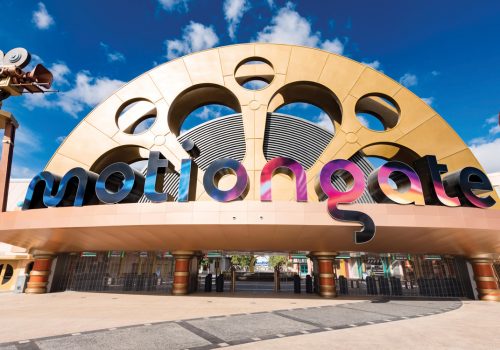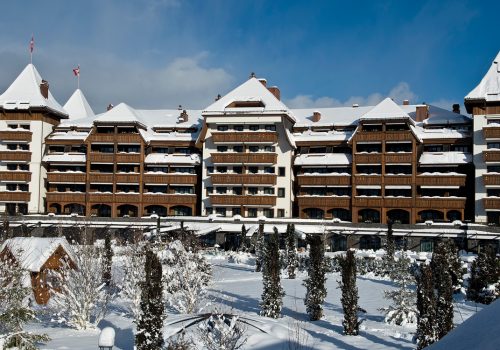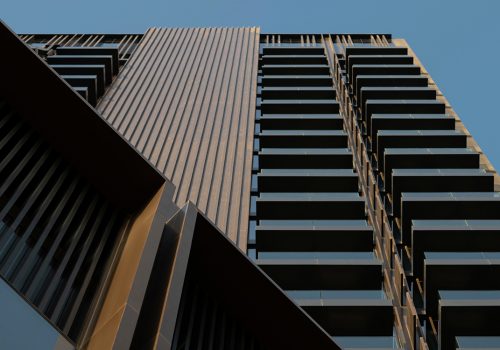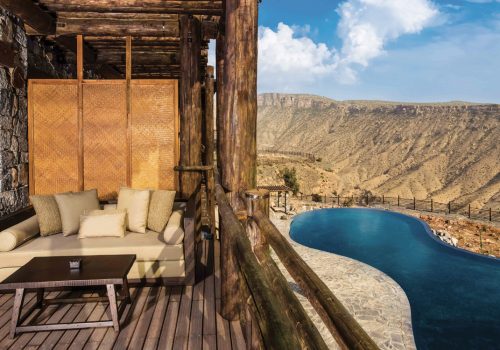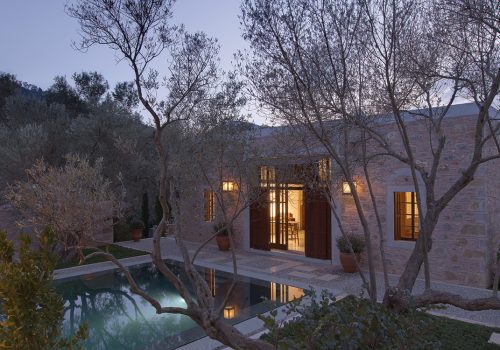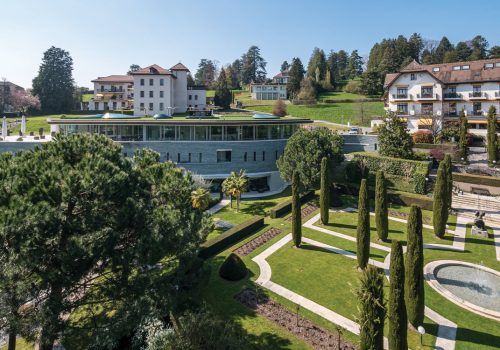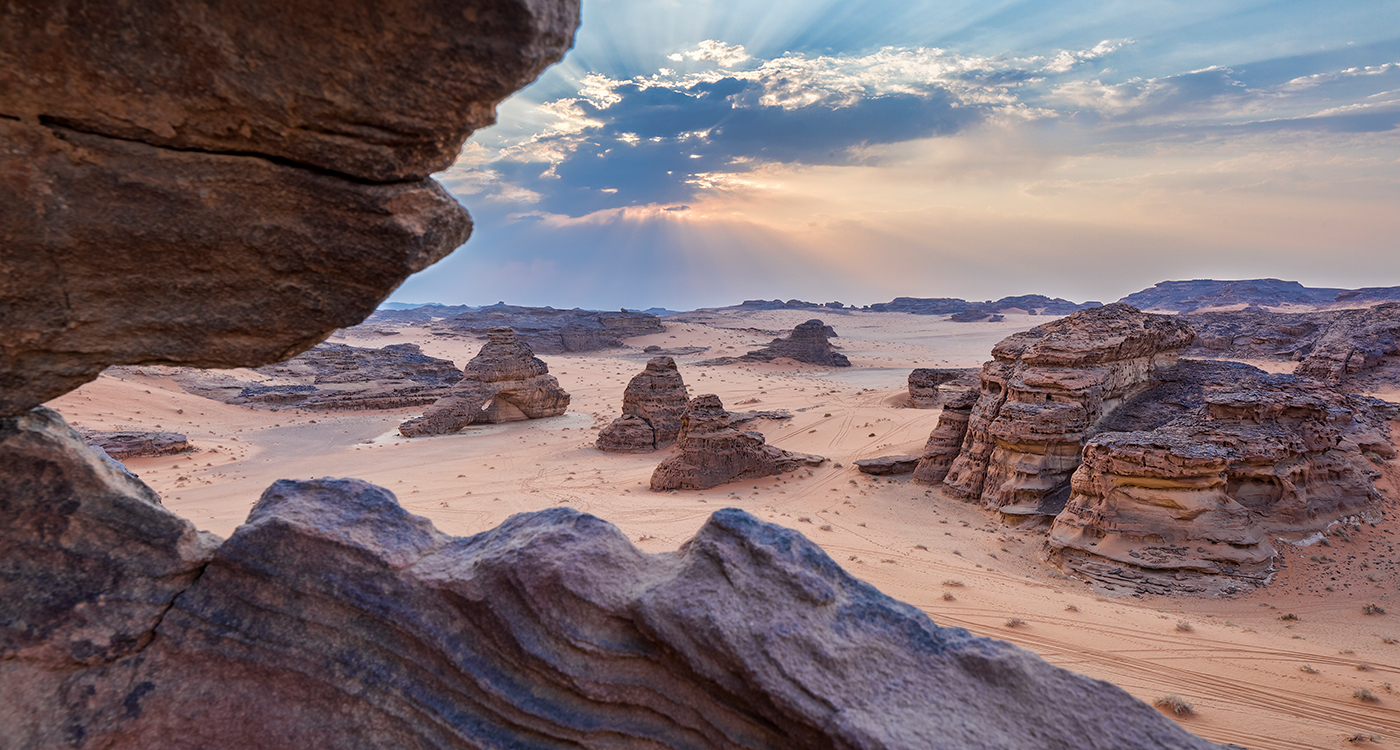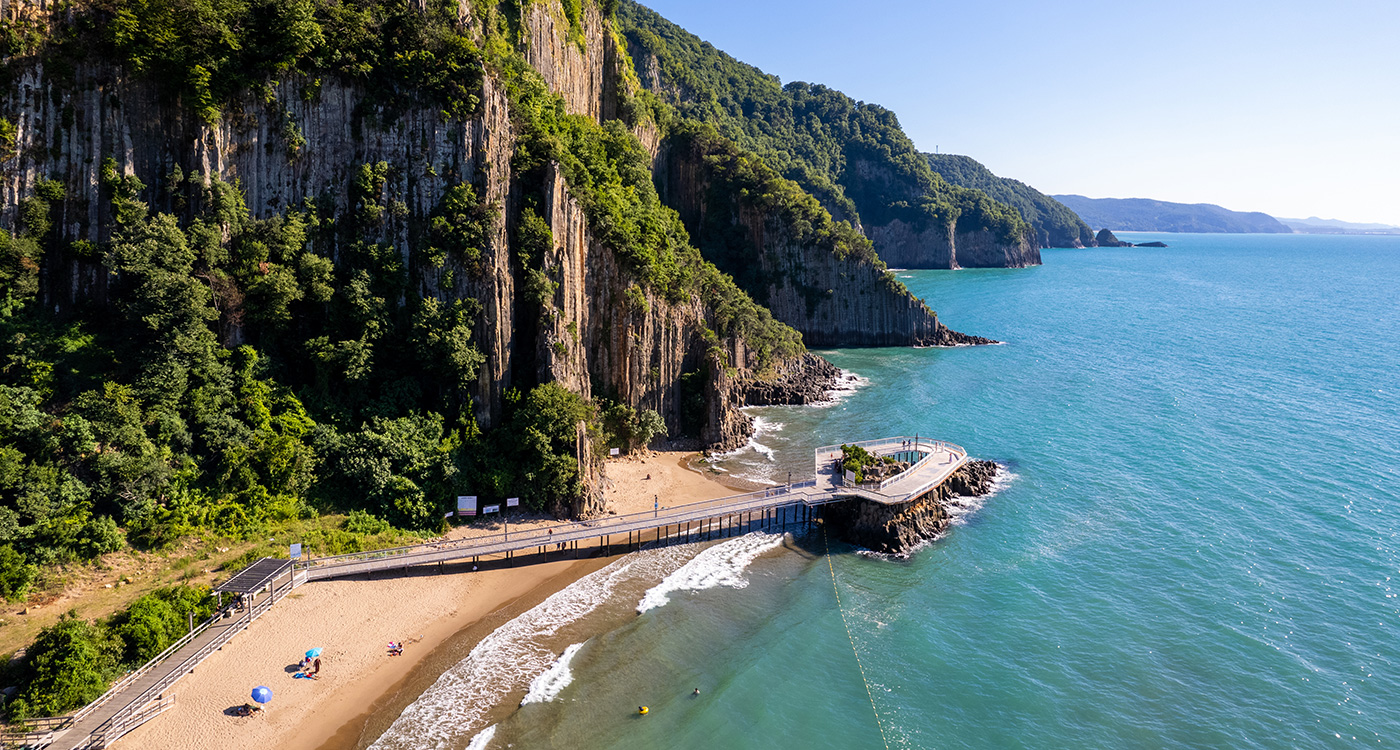It’s when you enter the fourth room that your heart stops. Three red sandstone colossi clad in simple white kilts, muscular arms by their sides, stand to attention in a row. Like every other object in this compact but powerful exhibition, they are lit to such perfection that you barely notice two are headless and the third has no face. Unearthed in Dedan, the ancient capital of the Lihyanite Kingdom, which was centred on modern-day Al-Ula, just a hop and a skip from the magnificent ruins of Mada’in Saleh in north-western Saudi Arabia, they are three of the 32 colossi found so far and appear to have lined the entrance to the city’s main temple, much like the promenade of ram-headed sphinxes outside the Temple of Karnak in Luxor.
It’s not the only Egyptian echo either. The statues, which likely represent Lihyanite kings from the 4th and 3rd centuries BC, are clearly influenced by the Ptolomaic style in terms of their musculature, stances and clothing, and while they are carved of sandstone rather than granite, they would not look out of place at the Egyptian Museum in Cairo.
And that is precisely one of the points this show, ‘Roads of Arabia’, a collection of artefacts unearthed along the peninsula’s ancient trade routes, is trying to make. By displaying pieces that demonstrate irrefutable links, whether direct or in terms of influence, with the civilisations of Mesopotamia, Iran, India, Greece and Rome, it seeks to demolish the notion that the central Arabian peninsula was isolated from the rest of the Ancient World, a shibboleth long-propagated both by those seeking to portray the region as a cultural wasteland, as well as those that, for equally chauvinistic reasons, clung to its supposed ‘purity’.

The statues are part of a show that traces the history of modern-day Saudi Arabia from the earliest settlements 11,000 years ago, a time when the peninsula was covered in grasslands and animals like the ostrich, the hippopotamus and the crocodile were native, through the rise of the pre-Islamic kingdoms, many associated with the incense trade of Arabia Felix (the southern part of the Arabian Peninsula and South Arabia), and into the Islamic period, which is beautifully represented through a stunning collection of thousand year-old carved gravestones and a mesmerising 14th Century silver and gold door from the Ka’aba.
First exhibited at the Louvre in 2010, Roads has been touring the world for the last eight years. Finally back in its region (if not quite country) of origin, the Abu Dhabi show has been supplemented with a number of pieces from the United Arab Emirates, including a 5,000 year-old carving of a camel, as well as several Saudi Arabian objects that were discovered after the exhibition was originally put together.
 From depictions of the world’s first ‘skyscrapers’, to golden death masks, haunting anthropomorphic stelae and everyday objects like vases, jewellery and keys (albeit to the Ka’aba), the rich ancient history of Saudi Arabia enthrals, fascinates, educates and entertains. And saddens, too. Not for any failing or weakness but because it has taken so long for so much of it to be put on display. Culture may be specific, but heritage belongs to the world and the beauty of these objects and the sophistication they embody should have taken their place in the collective consciousness a long time ago.
From depictions of the world’s first ‘skyscrapers’, to golden death masks, haunting anthropomorphic stelae and everyday objects like vases, jewellery and keys (albeit to the Ka’aba), the rich ancient history of Saudi Arabia enthrals, fascinates, educates and entertains. And saddens, too. Not for any failing or weakness but because it has taken so long for so much of it to be put on display. Culture may be specific, but heritage belongs to the world and the beauty of these objects and the sophistication they embody should have taken their place in the collective consciousness a long time ago.
As Ultimates go, ‘Roads of Arabia’ is a double whammy. Firstly, for the quality of an exhibition that, as Dr. Souraya Noujaim, scientific, curatorial and collection management director at the Louvre Abu Dhabi explains, tells “the history of a region yet to be told expansively” and secondly, for the institute that hosts it.
Opened to great fanfare (and some snark) in November 2017, the Louvre Abu Dhabi has proven to be a valuable addition to the region and to the world. Aware that it could be dismissed as a foreign import, the museum has set its sights squarely on attracting a local audience first. In that, it has been successful, with over 40 per cent of the one million visitors it attracted in its first year being Emirati nationals.
The impact of Jean Nouvel’s breath-taking building, the beautifully curated collection and dynamic outreach programme have clearly helped to demystify (and possibly de-fang) the museum-going experience in a region still getting used to the concept.
Exhibitions, including the permanent collection, aim to demonstrate links with the region, whether this is through the inclusion of local artefacts or more obliquely, by underlining cross-cultural similarities.
This is a key part of the museum’s universal aspirations. Its permanent collection, which features a percentage of objects on rotation from the mothership in Paris, compares cultures without prejudice, telling the history of the (art) world through concepts, rather than technical achievement, always with a focus on demonstrating how the same idea was conceived by different cultures.
In an increasingly fractured world, where the focus is too often on division and ‘otherness’, the museum understands that it is useful and necessary to remind visitors that even the most pronounced cultural differences are mostly a matter of presentation, that we all share the same impulses and desires, and that however an idea may be packaged, as Publius Terentius, a Roman playwright of Berber origin once wrote “I think nothing that is human is alien to me.”
The ‘Roads of Arabia’ exhibition is on view until February 16th, 2019.




